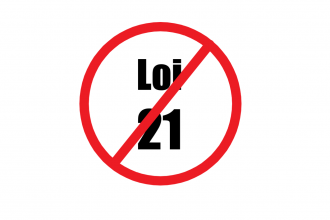I had some good news the other day: I secured a summer job and received an A on my paper. It was the perfect opportunity to get myself a little treat; I popped-down to the cafe by my apartment and tapped my card for an iced caramel latte and a cream cheese bagel. Eleven dollars. I deserved it.
If you’ve spent some time on TikTok, chances are you’ve come across videos of folks expressing their need to get a little treat — either as an emotional pick me up, a reward for some accomplishment, or to accompany them on their errands. Students and workers in their early twenties and thirties freely share their frivolous indulgences of small goods to get themselves through the week; popular items consist of baked goods and other quick foods, beverages, cosmetics, and accessories.
The fad of the little treat has been around long before Millennials and Gen Z have been posting about their spending on social media, though. In times of economic distress, especially during the 2008 financial crisis, cosmetic sales — specifically lipstick sales — remained fairly consistent amidst recessions. Coined by Estee Lauder as the “lipstick index”, women continued to make small but frequent purchases of lipstick and inexpensive cosmetics as prices of other glamorous items rose.
The lipstick index makes some fair sense; the idea of grabbing a two to eight dollar lipstick during times of inflation is more feasible than adding a pair of four hundred dollar shoes to your cart.
Small purchases give shoppers the emotional uplift without a hit to their bank account.
Lipstick isn’t the only cosmetic that enjoys consistent sales during financial hardships. Remember the pandemic? When no one saw the lower half of each other’s faces for two years? While lipstick sales were not greatly impacted as our pouts were masked, mascara and other eye cosmetics saw booming sales. In February 2020, Alibaba was reporting a 150% increase in mascara sales, suggesting a mascara index. In the early 2010s, nail polish experienced its own index as nail polish bottle sales doubled between 2005 and 2010; buying a four dollar bottle of polish that you can use repeatedly is more financially sensible than a salon visit, which will cost you minimum forty dollars, an hour and a half in a chair, and your sanity as you inevitably leave unsatisfied with your nail shape.
Cutting back on larger purchases like plane tickets, fancy furniture, and nights out imply young adults are adjusting to economic realities and enjoying smaller indulgences that still spark joy. However, despite seeming innocuous, little treat culture comes with a few drawbacks.
Becoming dependent on external rewards to accomplish necessary tasks can warp one’s relationship with spending, and put too much emphasis on short-term gratification.
Additionally, it is difficult to ignore the consumerism that goes hand in hand with little treat culture. Little treats have become synonymous with spending. Wanting to treat yourself for an accomplishment comes with a monetary strain, and when the $10 little treats are coming every few days because you did the dishes or submitted your late discussion post, are you being rewarded or punished?
What are young adults spending their money on? A study that 49% of young to middle age adults drink at least one cup of specialty coffee every day. Based on environmental, economic, and labour-related factors, one cup of regular black coffee will run you anywhere from three to seven dollars.
Now, what extras sketched on the café’s chalkboard menu pique your interest? Alternative milks like oat, almond, rice, soy, and hazelnut are becoming ever so popular and diverse…and are usually seventy five cents to a dollar extra. Or, if you have a sweet tooth, pumps of flavoured syrups, like dolce cinnamon or pumpkin spice from Starbucks, will charge you an extra eighty cents for a grande size latte.
Let’s do the math. One cup of regular coffee (say, four dollars) with almond milk (seventy five cents) and a pump of lavender syrup (eighty cents) is around six dollars and thirty cents, including tax. If you’re making this purchase every day, you’re dishing out $2,289 a year for your little treat. That is pretty steep. If you budget your indulgences to once or twice a week, however, you might appreciate your little treats more and be able to savour them properly.
You absolutely should treat yourself the way young adults have been doing for decades, but you should do so sensibly and mindfully; set budgets and limits and do your research regarding wallet-friendly bakeries and cafes, if that’s your thing. Also, look into options that don’t require any spending; carving time out of your day to do the New York Times’s Wordle or to bake some 3 ingredient peanut butter cookies are cost-effective treats that still provide you with gratification without feeding into repetitive, mindless spending. Here’s to the bagel-latte index.


